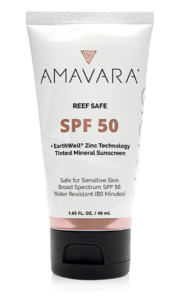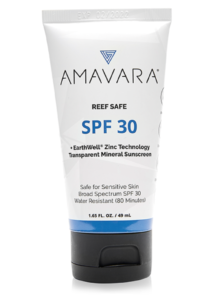
It feels like summer has come early this year, not because of the weather, but because the Coronavirus shelter-in-place orders have everyone home. Suddenly, there’s more time to be outside enjoying nature, gardening, and doing yard work.
I
When you yourself or your child with sensory issues, whether mild or more severe, putting on sunscreen can be a struggle. Perhaps it’s the texture, perhaps it’s the smell, perhaps it’s the touch…whatever is the cause for aversion, applying sunscreen can become a battle. Finding the right product is important to ease the stress.
We all experience some sensory overloads. We avoid itchy clothes or cut off irritating labels. We find solutions. We can do the same for our children in regards to sunscreen and avoid damaging sunburns.
Why are sunburns bad for you?
Sunburns are painful and can last a few days depending on the severity. Beyond the pain, what damage does a sunburn cause to our bodies? From premature aging to cancer, we’ve all heard the warnings.
Vice sums it up well:
There’s no sugarcoating this: Ultraviolet radiation, which is present in sunlight, causes DNA damage and genetic mutations, making it a major catalyst for skin cancer. About 95 percent of cases of melanoma, the most aggressive and deadly kind of skin cancer, are attributable to UV-ray exposure. Skin cancer is the most common type of cancer in fair-skinned populations, and the incidence and mortality rates of it are increasing. About one in five Americans will develop skin cancer during their lifetime.
How Screwed Am I From Bad Sunburns I Got as a Kid?
Risks are increased based on your family genetics and fairness of skin.
What about Vitamin D deficiency?
As humans, we need the sun. We need the sun to grow our food. We need the sun to absorb Vitamin D, especially during these Covid-19 times. Medical researchers have found “a strong correlation between severe vitamin D deficiency and mortality rates”, according to Northwestern University. Beyond 15 minutes, we need protection from the sun.
What’s wrong with traditional sunscreens?
Many sunscreens contain dangerous chemicals and nanoparticles that are bad for both the earth and human health.
Most sunscreens are toxic. The Environmental Working Group (EWG) has identified the following problems with sunscreens. Many contain chemical filters to protect skin from the sun, yet these chemicals mimic hormones. One study found a common sunscreen chemical ingredient lowered testosterone levels. Furthermore, they often are a source of skin allergies. These chemical ingredients are absorbed into your skin straight into the bloodstream. Testing has found their presence in human urine, blood, and breastmilk

Many sunscreens contain ingredients that damage coral reefs and have been banned by
In a 2016 study, a team of international scientists found that a common chemical in many sunscreen lotions and cosmetics is highly toxic to juvenile corals and other marine life. Oxybenzone, or BP-3, is found in more than 3,500 skin care products worldwide for protection against the sun’s harmful effects. The compound has been found entering the environment both through wastewater effluent and directly from swimmers wearing sunscreens…
In a 2013 study, NOAA National Centers for Coastal Ocean Science researchers and their partners discovered that a sunscreen chemical commonly used in many soaps, cosmetics, and body fragrances is highly toxic to corals. The team’s data show that even very low concentrations of benzophenone-2, or BP-2, can quickly kill juvenile corals. BP-2 is an additive used in personal-care products since the 1960s to protect against the damaging effects of ultraviolet light.
Skincare Chemicals and Coral Reefs
Amavara Sunscreen Review: Protect What You Love
Made in the USA, Amavara follows “clean beauty standards” and “reef safe technology” to provide you with quality sunscreen safe for sensitive skin. Additionally, these sunscreen products are water-resistant for up to 80 minutes using EarthWell Zinc Technology.
I’ve tried many natural sunscreens. Some work, some do not. Some leave you looking like a greasy ghost, and some contain questionable
We were sent three Amavara products to try. I have not taken them out for the ultimate sunscreen trial of backpacking for days with full sun exposure, but they have stood up to the test of my average daily sun exposure, which is far more than most. Every day I am hiking, working in the garden, hanging laundry up to dry, etc. I prefer to be outside.
The Environmental Working Group has rated Amavara products with a low hazard score of 2. Furthermore, their packaging is post-consumer recycled plastic, and their products are cruelty-free and kid-s

AMAVARA
SPF 50 TINTED LOTION
Amavara® sunscreen provides you with better sun protection. Our versatile SPF 50 Mineral Tint Sunscreen is formulated for daily use on a wide range of skin tones. Try adding this tinted daily defense lotion to your morning routine so you can stay moisturized and protected wherever life takes you.
Formulated with a high concentration of non-nano zinc oxide (22.5%) as the only active sunscreen ingredient. We’ve cracked the code to the new standard in sunscreen. Go ahead, be Overly Protective®.
AMAVARA
SPF 50 TINTED LOTION
This tinted sunscreen is light and smooth. It does not leave streaks or unevenness upon application like some tinted sunscreens I have tried. The mild fragrance is quite pleasant, and you do not notice that you are wearing sunscreen.
I’ve never really understood tinted sunscreen, as the ones I have tried

AMAVARA
SPF 30 LOTION
Amavara® sunscreen provides you with better sun protection. Our lightly tinted SPF 30 mineral sunscreen lotion uses a high concentration of non-nano zinc oxide (19%) as the only active sunscreen ingredient and is uniquely formulated to rub in clear, perfect for daily use. We’ve cracked the code on the new standard in sunscreen. Go ahead, be Overly Protective®.
AMAVARA
SPF 30 LOTION
Just like the tinted version with SPF 50 protection, the AMAVARA
SPF 30 LOTION offers protection safe, thorough protection. When applied lightly and rubbed in thoroughly, this product is truly transparent. At first, there is a whitish tinge, but it goes away unless you apply it too liberally. Small amounts at a time are best for a truly clear application.
The fragrance is light, and it leaves the skin feeling nourished and protected. In fact, it feels soothing on dry, worked skin such as my hands.

AMAVARA
SPF 50 FACESTICK
Amavara® mineral sunscreen provides you with better sun protection and our facestick makes for an easy application for all ages. We use a high concentration of non-nano zinc oxide (22.5%) as the only active sunscreen ingredient and is uniquely formulated to rub in clear. We’ve cracked the code to the new standard in sunscreen. Go ahead, be Overly Protective®.
AMAVARA
SPF 50 FACESTICK
If you have never tried a stick version of sunscreen, I highly recommend it, especially if you have a child with sensory issues. My son hates lotions but will tolerate a
The small size of the AMAVARA SPF 50 FACESTICK is extremely convenient for hiking and backpacking or just tossing in a bag to go to the beach. It goes on super smoothly, the light fragrance is truly lovely.
At first smear, there is a faint amount of whiteness form the zinc oxide; however, after one light rub in, it was gone. This product is truly transparent mineral sunscreen and perfect for the face. The SPF 50 UVA and UVB offers maximum protection, as well as the water resistance, is perfect for outdoor activities where one sweats or is in the water.
Amavara SPF 50 Facestick is the best sunscreen I have found for children with sensory issues!
All of Amavara’s mineral sunscreens are offer dry grip. They are of high-quality and leave your skin feeling hydrated while offering sun protection. These products are light and non-greasy, easy to apply, and not noticeable while wearing.The AMAVARA SPF 50
Leave a Reply